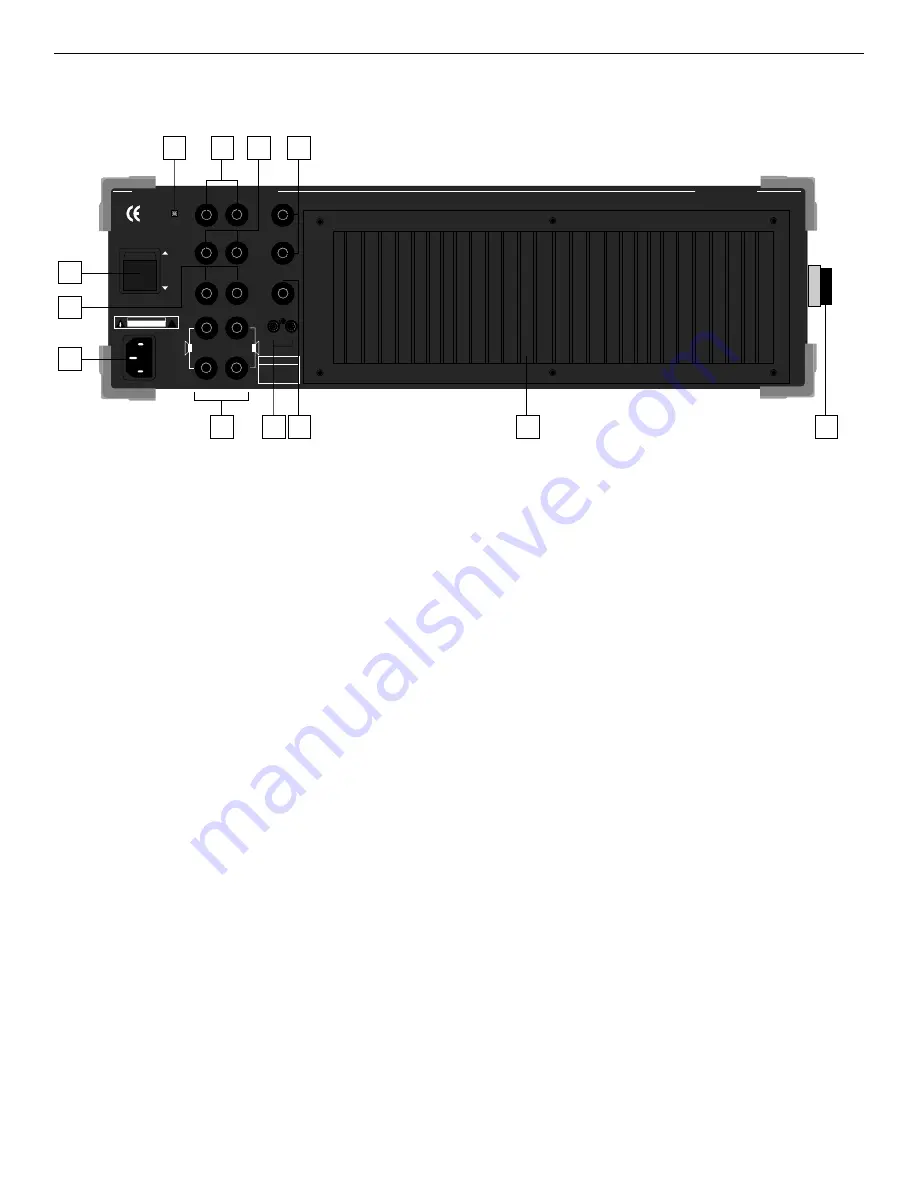
Guided Tour - Rear Panel
1: Power switch - As you may have guessed, this is what you use to turn the
SD8 on and off. The built-in protection relay circuitry (which mutes the outputs
for approximately five seconds after powering on) prevents power-on “thumping,”
which can potentially damage connected speakers.
2. AC input - Connect the supplied standard 3-pin “IEC” plug here.
3: Phantom switch - When this switch is pressed in, the SD8 delivers 48 volts
of phantom power to pins 2 and 3 of all XLR microphone connectors in all eight
channels. WARNING: Only use this switch with the SD8 powered down.
Before turning phantom power on, be sure to disconnect all non-microphone
signal sources (such as passive direct injection boxes) from the XLR mic jacks.
Although phantom power will have no adverse affect on connected dynamic
microphones, it should be used only when one or more condenser microphones
are connected to the SD8. Refer to the owners manual of your microphone
or active direct injection (DI) box to determine whether or not it requires
48 volts phantom power—Samson cannot assume responsibility if you
damage a mic or DI box by incorrectly applying phantom power from the
SD8. If you’re not completely certain that one or more connected mics or active
DI boxes require 48 volts phantom power, leave this switch off (its out position).
4: Aux Returns 1 - 2 - These unbalanced inputs allow you to route signal from
external devices such as effects processors to the Aux Return knob on the front
panel of the SD8 (see #5 on page 8). Because the SD8 is a stereo system, the
signal arriving at Aux return 1 is automatically panned hard left and the signal
arriving at Aux return 2 is automatically panned hard right. See the “Using the
Aux Sends and Returns” section on page 19 in this manual for more information.
9
CH7
POWER
CH8
CH7
CAUTION
RISK OF ELECTRIC SHOCK
DO NOT OPEN
!
SERIAL NUMBER
O
ON
OFF
SAMSON
SD8 STEREO MIXER AMPLIFIER
+48V
PHANTOM
POWER
AC INPUT
115V 50/60Hz
SPEAKER OUT
R MINIMUM 4
Ω
L
AMP IN
R (+4dBu 10K
Ω
) L
PRE OUT
R (+4dBu <75
Ω
) L
AUX RETURN
2 (+4dBu 10K
Ω
) 1
AUX SEND 1
(+4dBu <75
Ω
)
AUX SEND 2
(+4dBu <75
Ω
)
MON OUT
(+4dBu <75
Ω
)
TAPE/CD IN
4
1
2
5
6
7
9
10 8
11
3
12












































